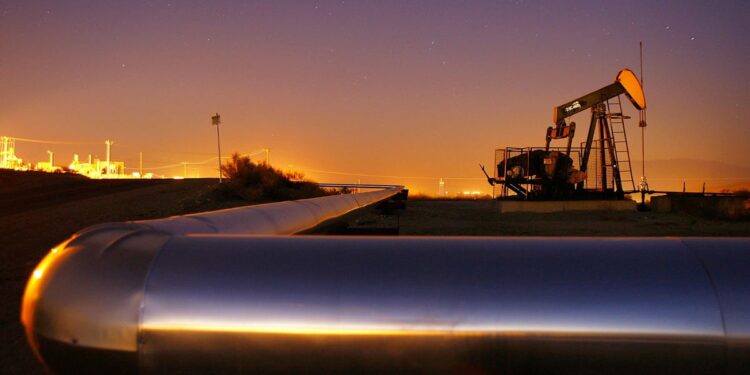Commodities have taken a pounding in recent days on growing fears of a global recession and demand destruction.
Oil and natural gas are no exception. Global benchmark Brent crude is struggling to remain above $100 a barrel after reaching as high as $139 in early March and trading around a $110-$120 range for much of the year. U.S. benchmark West Texas Intermediate has dropped below $100 a barrel – a first since April.
Mounting recession fears help explain the broad sell-off in commodities, but markets should realize that not all commodities are created equal.
An economic recession would, of course, take a toll on demand. Still, the bottom line is that the current energy shock results from limited supply – and those deficits won’t disappear entirely, even in lower-demand scenarios.
Supply tightness is not going away in energy markets. Recession fears could make matters worse if they prompt oil companies to pump the brakes on investments in new supply projects, which were already running behind pre-pandemic levels.
OPEC recently ran three oil demand scenarios for 2022 – high, low, and base. Under each one, the fourth quarter would still see crude inventories below the five-year 2015-2019 average.
Oil investors should not forget about the minimal spare production capacity in OPEC, which both French President Emmanual Macron and Shell CEO Ben van Beurden publicly noted recently.
Then there is Russia. So far, Russian oil production and exports have resisted Western sanctions and other efforts to cut Moscow’s supply of petro-dollars. The International Energy Agency’s May report estimated that Russian production declined by nearly 1 million barrels a day in April and that “losses could expand to around 3 million barrels a day in the second half of the year.”
That’s because the EU has agreed to phase out imports of Russian oil by year-end, with some exceptions.
Meanwhile, producers outside OPEC, including the United States, largely remain committed to capital discipline to stay in the good graces of their investors. That puts a cap on how much new supply they can contribute.
Adding insult to injury, nobody seems to have an answer for the shortage of refining capacity in global oil markets. The world lost an estimated 4 million barrels a day of refinery capacity during the pandemic when demand collapsed in an unprecedented fashion.
But now that consumption is back on the rise, the industry’s ability to sufficiently meet demand with refined fuels – gasoline, diesel, fuel oil, jet fuel – simply is not there. And few investors are willing to build new refineries since policymakers are focused on a rapid energy transition and tackling climate change.
The situation in global gas markets is equally perilous – more so in Europe, where dependence on Russian supply remains high.
Europe averted disaster when Norway intervened to end a strike by offshore oil and gas workers that could have decimated exports to the continent. European countries desperately try to replenish gas storage levels before the peak winter season. Still, Russian President Vladimir Putin wields a powerful energy weapon that can cut off exports at a moment’s notice.
The critical Nord Stream 1 Russian gas pipeline to Europe undergoes maintenance from July 11 to July 21. The question is whether gas flows will resume on July 22, and the continent must wait with bated breath.
Benchmark gas prices at the Dutch TTF have been trading near $50 per million Btu, and Europe remains heavily reliant on expensive supplies of liquefied natural gas (LN
LN
G) in the spot market. However, LNG markets have tightened dramatically with the lengthy shutdown of the Freeport export facility in Texas and are expected to stay expensive for the foreseeable future.
Recession risks are real, as is the possibility of new Covid lockdowns in China that could curb energy demand.
But it’s very difficult seeing these demand-side risks outweighing supply concerns – precisely what’s been happening in markets recently.
It won’t take much to tip the balance with the market on a knife’s edge like this.
Even modest supply disruptions from smaller producers such as Ecuador or the Caspian region can have an outsized effect in such a volatile environment, as the oil market has demonstrated recently.
That doesn’t make oil and gas “recession-proof,” but supply constraints should make energy commodities far better bets than other risky assets in financial markets.
It’s no wonder that Goldman Sachs is sticking with its “supercycle” and thinks Brent crude will average $135 a barrel in the second half of 2022.
Because after investors examine the fundamentals, it’s clear that the current oil market malaise is as much about risk aversion as anything else. And this, too, shall pass.











